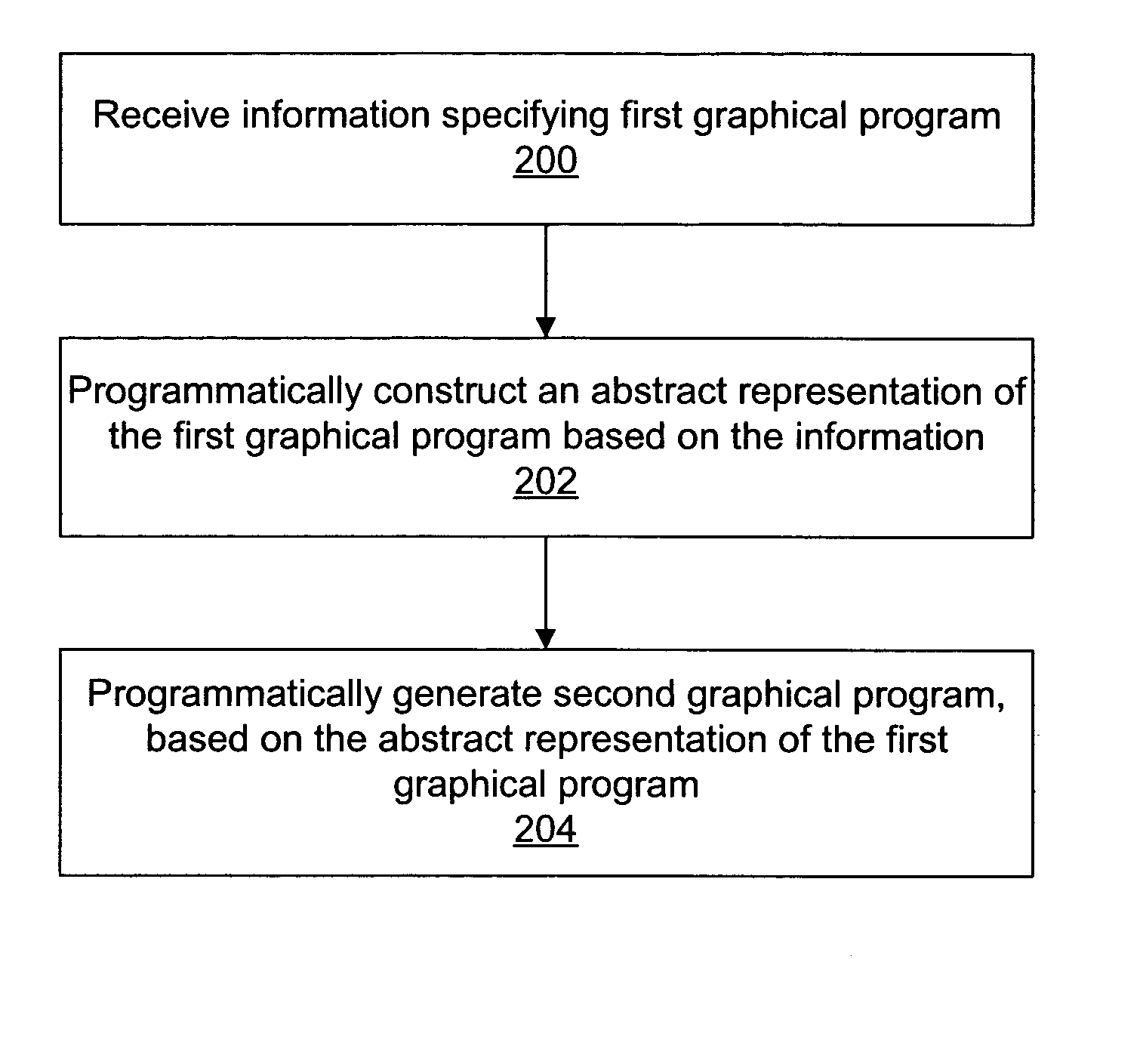System and method for programmatically generating a second graphical program based on a first graphical program
a program and programmatic technology, applied in the field of graphical programming, can solve the problems of user programming skills and ability to interact with the computer system often becoming a limiting factor in the achievement of optimal utilization of the computer system, complex task of programming a computer system to model or implement a process often being further complicated, etc., to achieve more deterministic performance
- Summary
- Abstract
- Description
- Claims
- Application Information
AI Technical Summary
Benefits of technology
Problems solved by technology
Method used
Image
Examples
Embodiment Construction
Incorporation by Reference
[0049] The following reference is hereby incorporated by reference in its entirety as though fully and completely set forth herein:
[0050] U.S. Pat. No. 5,481,741 titled “Method and Apparatus for Providing Attribute Nodes in a Graphical Data Flow Environment,” issued on Jan. 2, 1996.
[0051] U.S. patent application Ser. No. 09 / 745,023 titled “System and Method for Programmatically Generating a Graphical Program in Response to Program Information” filed on Dec. 20, 2000, whose inventors were Ram Kudukoli, Robert Dye, Paul F. Austin, Lothar Wenzel, and Jeffrey L. Kodosky
[0052] U.S. patent application Ser. No. 09 / 518,492 titled “System and Method for Programmatically Creating a Graphical Program” filed on Mar. 3, 2000, whose inventors were Ram Kudukoli, Robert Dye, Melanie Jensen, and Yumiko Kawachi.
[0053] U.S. patent application Ser. No. 09 / 595,003 titled “System and Method for Automatically Generating a Graphical Program to Implement a Prototype” filed on...
PUM
 Login to View More
Login to View More Abstract
Description
Claims
Application Information
 Login to View More
Login to View More - R&D
- Intellectual Property
- Life Sciences
- Materials
- Tech Scout
- Unparalleled Data Quality
- Higher Quality Content
- 60% Fewer Hallucinations
Browse by: Latest US Patents, China's latest patents, Technical Efficacy Thesaurus, Application Domain, Technology Topic, Popular Technical Reports.
© 2025 PatSnap. All rights reserved.Legal|Privacy policy|Modern Slavery Act Transparency Statement|Sitemap|About US| Contact US: help@patsnap.com



